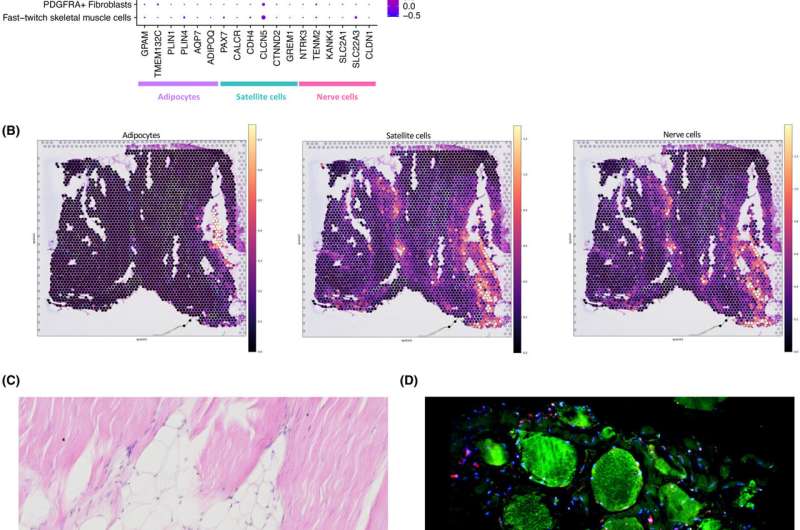This article has been reviewed according to Science X's editorial process and policies. Editors have highlighted the following attributes while ensuring the content's credibility:
fact-checked
peer-reviewed publication
trusted source
proofread
Researchers uncover the cellular secrets of healthy tendons

Research has unveiled the intricate cellular landscape of healthy human hamstring tendons, shedding new light on this vital yet often overlooked component of our musculoskeletal system.
Tendons are the tough, fibrous tissues that connect our muscles to our bones, allowing for smooth, coordinated movement and the transfer of forces generated by our muscles. While tendons are critical for our mobility, their underlying biology has remained poorly understood, particularly in healthy human tissues.
"Tendons are absolutely essential for musculoskeletal function, yet we still have so much to learn about their basic biology, even in a healthy state," said senior author Associate Professor Sarah Snelling of NDORMS, University of Oxford.
"By mapping the cellular makeup of healthy tendons, we can start to unravel the complex networks that maintain tendon health and identify potential targets for treating tendon disorders like tendinopathy and tears, which are all too common, especially as we age."
Published in FASEB Journal, the study used single-nuclei and spatial transcriptomic techniques to profile the different cell types present in healthy hamstring tendons.
The research team analyzed more than 10,000 individual cell nuclei from four healthy human donors, revealing a surprisingly diverse array of cell types. In addition to the well-known tendon cells, called fibroblasts, the team identified the presence of endothelial cells (which line blood vessels), immune cells, and unexpected cell types previously unreported in tendons, including different skeletal muscle cells, satellite cells, adipocytes (fat cells), and even some cells from the nervous system.
Importantly, the researchers found two distinct subsets of fibroblasts, which appear to play a central role in maintaining tendon health. These fibroblasts are responsible for producing and organizing the tendon's extracellular matrix, the flexible, fibrous scaffold that gives tendons their strength. The fibroblasts were found to have the highest number of potential interactions with other cell types, suggesting they act as key coordinators within the tendon's cellular ecosystem.
"Fibroblasts seem to play a central coordinating role in healthy tendon function," explains lead author, Dr. Jolet Mimpen of NDORMS, University of Oxford. "Not only do they produce the essential building blocks of the tendon, but they also appear to orchestrate complex signaling networks with other cell types. This highlights their crucial role as master regulators of tendon homeostasis."
The study also uncovered the spatial distribution of these cell types within the tendon. This revealed the intricate organization of the tendon, with the two fibroblast subsets occupying distinct niches and interacting with their neighboring cells in unique ways.
"This study represents a significant step forward in our understanding of tendon biology," says Jolet. "By creating a comprehensive reference atlas of healthy human tendons, we can start to identify the critical pathways and interactions that are disrupted in disease. This could ultimately lead to new treatments that address the root causes of tendon problems, rather than just managing the symptoms."
More information: Jolet Y. Mimpen et al, Single nucleus and spatial transcriptomic profiling of healthy human hamstring tendon, The FASEB Journal (2024). DOI: 10.1096/fj.202300601RRR





















